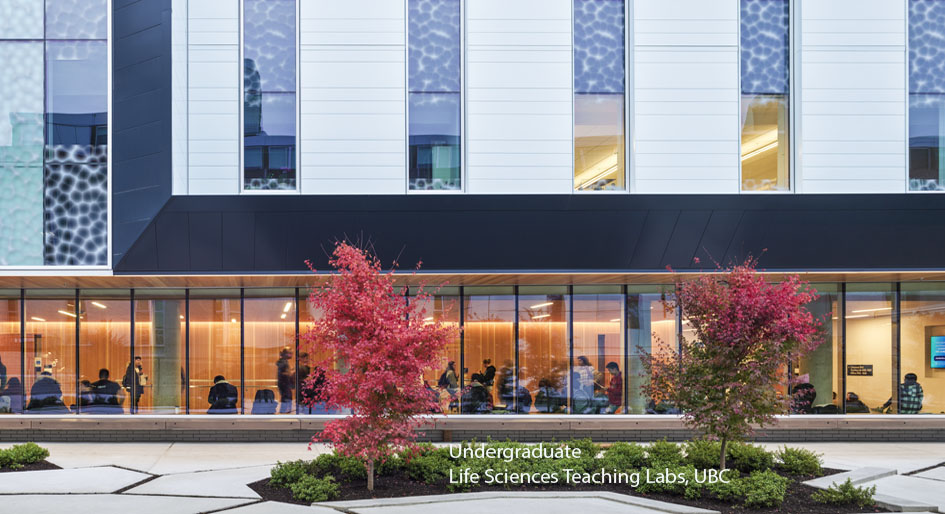Nine months into the COVID-19 pandemic, we are finding out how resilient we are. After a near global lock down in March, countries and jurisdictions across the world have entered different stages of recovery with a focus on outdoor gatherings to maintain social distancing. As we move into the fall and winter season in the Northern Hemisphere, we are expecting a second wave with a spike in infections of COVID-19.
Without a vaccine and the increasing necessity of being inside in the winter months, we need design solutions to mitigate our environments so that we feel more comfortable gathering indoors. Our indoor environments need to be resilient towards airborne viruses such as COVID-19, but in many buildings that is not the case. Our industry has been focused on building resiliency for the last decade in respect to climate change, but not in respect to pandemics.
Resiliency in architecture comes from potential catastrophes; is your structure resilient enough to resist the forces of nature? It’s no different from human resilience. Do you have grit? Do you have the strength within you to overcome? Sometimes we do and sometimes we don’t, and buildings are no different. Resilience whether for humans or buildings requires the appropriate groundwork in place.
One aspect of building resiliency is energy. As architects, we have focused on reducing building energy through energy codes and constructing buildings that are airtight. As the codes have become more restrictive, we are seeing major gains in energy savings in all types of buildings, including high performance buildings. Energy efficient building design requires all the building systems, including building envelope and HVAC, to work together to be as efficient as possible. COVID-19 has placed the focus on indoor air quality and thermal comfort, which includes variables such as temperature, humidity, ventilation, etc. Increasing or decreasing these variables in a building not designed to handle these new values can increase energy use and result in a less energy efficient building. The challenge now becomes balancing the sustainability of a building with pandemic resilience.
How can we design buildings that are resilient to both climate change and pandemics? Sustainability is still critical, the health impacts of climate and environmental change is one of the five World Health Organization’s priorities.2 As architects, we need to continue to be mindful of our energy reduction targets and environmentally resilient design while finding solutions to mitigate the risk of airborne viruses such as COVID-19. Humans and microbes (viral, fungal and bacterial) are all linked by our indoor environments. We need to ask what indoor factors can contribute to infections.
It is understood that infectious particles are suspended in the air and settle on surfaces. Research from as far back as 1985, the Stirling Chart below shows that relative humidity plays a large role in our indoor environment with respect to the increase and decrease of infection rates for pathogens.
This pandemic has forced us to look again at this important indoor factor. While pathogens thrive in low relative humidity and even very high humidity levels, pathogens including the coronaviruses do not do well between 40-60 per cent. At the same time, the optimal humidity levels for human comfort, development, and health sits between 40-60 per cent.
These levels can support our respiratory tract and the skin’s natural defenses. This same body of research also shows that if a building can maintain the relative humidity sweet spot of 50 per cent, the burden of infectious diseases is decreased by:
- decreasing the airborne aerosols in our breathing zone;
- decreasing actual infectivity of SARS CoV-2 virus in airborne aerosols and surface particles;
- increasing the efficacy in effectiveness hand and surface cleaning by decreasing resuspension and resettling of particles;
- increasing the rate of air exchanges combined with appropriate level of air filtration for re-circulation.
Controlling humidity levels is not new – along with laboratories, archival spaces for galleries and museums have very precise humidification and temperature controls for long term preservation. Working on the design of these types of spaces requires an understanding of what the optimal environmental conditions are for these collections to avoid deterioration. The design of our indoor environments should have the same considerations for human health.
Currently, we have recommended humidification levels in North America but these are not mandatory. In areas that are naturally humid, such as British Columbia, additional humidification to the building’s HVAC systems may be perceived as an additional cost. As such, the target identified of 40-60% is not necessarily implemented. If it is determined that we need to add humidification to mitigate the spread of COVID-19, it becomes an issue in the places that have never considered additional humidification. To add higher rates of humidification into existing buildings, both the new humidification systems and improvements to the other building systems to support this addition, is an economic proposition. Resiliency does have a cost factor associated with it, how much do we spend and implement now for future unknowns?
Climate change is not going anywhere, and COVID-19 certainly won’t be our last pandemic. While the costs of resiliency must be considered, the economic implications of pandemics and climate change cannot be underestimated. We have an opportunity to design buildings that are resilient for high risk conditions for now, the short-term, and the long-term future to support our health, our economy, and the planet.
Peggy Theodore is principal at Diamond Schmitt Architects.







